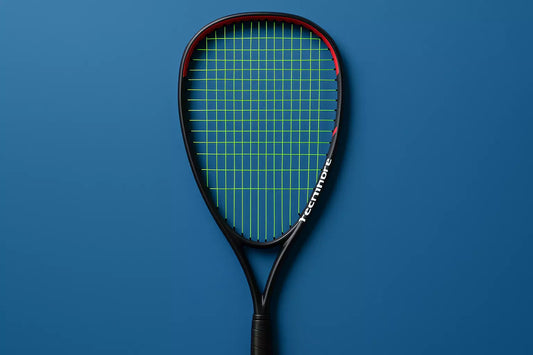Restringing your squash racket is crucial for maintaining optimal performance on the court. Over time, strings lose tension, become less responsive, and can eventually break. But how often should you restring your squash racket? The answer depends on several factors, including your playing frequency, playing style, and the type of strings you use. In this guide, we’ll help you determine the right restringing schedule to keep your game at its best.
Factors That Affect String Longevity
1. Playing Frequency
The more you play, the quicker your strings wear out. Here’s a general guideline based on how often you play:
- Casual Players (Once a week or less): Restring every 3 to 6 months.
- Regular Players (2-3 times a week): Restring every 2 to 3 months.
- Competitive Players (4+ times a week): Restring every 4 to 6 weeks.
- Professional Players: Some restring before every match or training session.
2. String Type
Different types of strings affect durability and performance:
- Natural Gut: Provides excellent feel and power but wears out quickly.
- Multifilament: Offers good power and comfort but frays over time.
- Synthetic Gut: Balanced durability and performance, suitable for most players.
- Polyester/Co-Polyester: Very durable but loses tension faster.
If you use natural gut or multifilament strings, you may need to restring more frequently than if you use synthetic gut or polyester.
3. Playing Style
Your style of play also influences how quickly your strings wear out:
- Power Players (Hard hitters, frequent smashes): The constant high impact stresses the strings, leading to faster wear.
- Control Players (Precise shots, drop shots, lobs): Strings may last longer but still lose tension over time.
4. Tension Loss
Even if your strings don’t break, they gradually lose tension. This affects your power, control, and shot accuracy. If you feel a significant drop in performance, it’s time to restring.
5. Environmental Factors
Humidity, temperature changes, and exposure to moisture can weaken strings. If you store your racket in extreme conditions, your strings may wear out faster.
Signs That You Need to Restring
If you're unsure whether it’s time for a restring, look out for these signs:
- Noticeable loss of tension, making your shots feel weaker and less precise.
- Strings move excessively, requiring constant adjustment.
- Frayed or worn-out strings, increasing the risk of breakage.
- Unresponsive feel, making it harder to generate power and control.
Conclusion
How often you should restring your squash racket depends on your playing habits, string type, and personal preference. A good rule of thumb is to restring as many times per year as you play per week. Keeping your strings in top condition ensures consistent performance, better control, and improved durability. Don’t wait until your strings break—regular restringing will keep your game sharp and your racket performing at its best!





